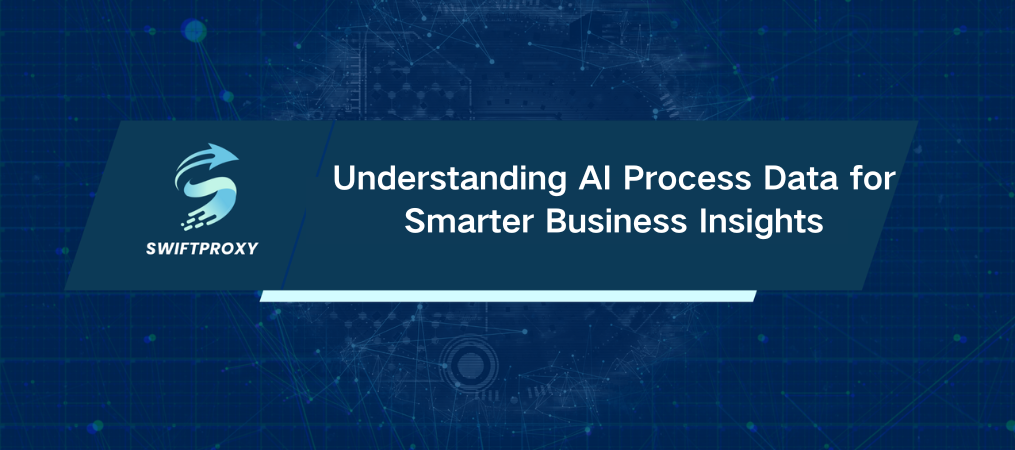Understanding AI Process Data for Smarter Business Insights

AI isn't just a buzzword; it's reshaping industries, transforming how we process and interpret data at scale. In fact, research shows that by 2027, the AI market is projected to surpass $500 billion. Let that sink in. AI is no longer a futuristic concept – it's here, and it's revolutionizing how businesses use data. But how does it work? Let's dive into the powerful steps AI uses to transform raw data into insights, and why it all hinges on data quality.
Understanding the AI Data Processing Journey
To truly unlock the power of AI, you need to understand the key steps it takes to process data. It's a journey from messy, raw information to polished, actionable insights.
1. Data Collection: The foundation of any AI project is the data itself. From user interactions to web scraping, data floods in from countless sources. But gathering data is only the beginning. It's about casting a wide net to capture all the valuable nuggets that will fuel AI's insights.
2. Data Cleaning and Preparation: Here's where things get interesting. Raw data is like a wild river—full of noise and errors. It needs to be filtered, cleaned, and organized before it's useful. Think of this step as sorting through your digital "catch," tossing out the junk, and ensuring the rest is in a format AI can actually work with.
3. Machine Learning Algorithms: Now comes the magic. AI doesn't just "read" data—it learns from it. Using sophisticated algorithms, AI identifies patterns and makes predictions. Over time, the more it learns, the better it gets. It's like teaching a machine to spot trends in massive data sets, and it's a game-changer for industries from healthcare to finance.
4. Deep Learning: For complex tasks, AI takes things up a notch with deep learning. These artificial neural networks are modeled after the human brain, giving AI the ability to process vast amounts of data with precision. Deep learning is why AI can recognize images, understand speech, and even translate languages. It's no longer just about data; it's about understanding it at a profound level.
Comparing Machine Learning and Deep Learning
AI comes with a toolkit of techniques. Let's break down two of the heavy hitters: machine learning and deep learning.
1. Machine Learning: This is where AI shines in everyday applications. Whether it's predicting customer behavior or detecting fraud, machine learning algorithms sift through data and spot patterns that humans might miss. What's powerful here is its ability to get smarter over time. The more data you feed it, the sharper it gets.
2. Deep Learning: Imagine AI that can recognize faces or understand natural language. That's deep learning at work. By using neural networks, it can handle vast amounts of data, uncovering insights that are incredibly precise. Think of it as the next evolution of AI—one that can solve problems in areas like image recognition, autonomous vehicles, and medical diagnostics.
Why Quality Data is Everything
Here's a harsh truth: garbage in, garbage out. The success of any AI system hinges on the quality of the data it's given. High-quality data means more accurate predictions, better insights, and ultimately, smarter decisions.
In industries like healthcare and finance, bad data can lead to disastrous outcomes. A single error can distort an AI's predictions, causing a ripple effect that impacts decisions, profits, or even lives. The moral here is simple: invest in clean, accurate data. It's the backbone of effective AI.
The Pitfalls of Bad Data
Inaccurate data isn't just an inconvenience—it's dangerous. Imagine autonomous cars making decisions based on flawed data. Or financial institutions using biased data to assess risk. It's clear that without high-quality data, AI systems are at risk of making costly mistakes.
To ensure reliability, businesses need to maintain data transparency and audibility. Document and trace your data sources. Test and assess regularly. This proactive approach keeps AI systems on track, ensuring they operate at peak performance.
Tackling Data Challenges
As powerful as AI is, it's not without its challenges. Some hurdles that organizations need to consider:
1. Privacy and Security: AI relies on massive data pools, but how do you ensure sensitive information stays protected? It's crucial to stay compliant with regulations and implement robust security measures.
2. Bias: If training data is skewed, AI systems will reflect that bias. In areas like hiring or criminal justice, this can lead to harmful stereotypes. Regular audits, diverse datasets, and continuous monitoring are essential to combat bias in AI.
Unlocking the Power of AI
AI data processing is a journey, one that transforms vast amounts of raw information into actionable, business-driving insights. But it all starts with quality data. The better your data, the smarter your AI, the more impactful your results. And with the right tools—like web scrapers and proxies for collecting data—you can ensure that your AI systems are always operating with fresh, high-quality data.
By investing in data accuracy and continually refining your AI models, you can unlock AI's full potential, fueling innovation and making smarter, more informed decisions.

















































